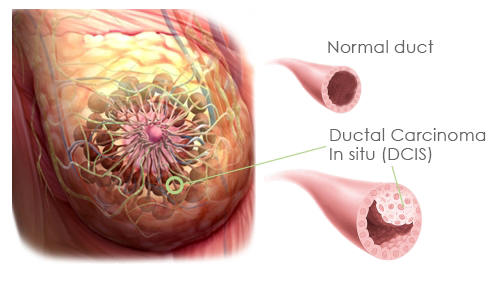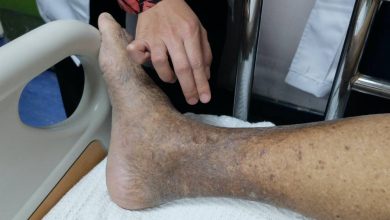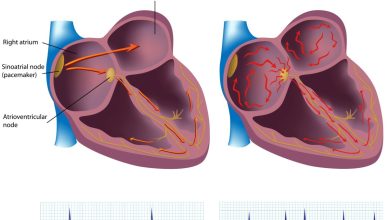Ductal Carcinoma In Situ (DCIS) Causes, Symptoms, Diangosis and Treatment

What Is Ductal Carcinoma In Situ?
Ductal carcinoma in situ is a non-invasive cancerous lesion of the breast. It is marked by presence of abnormal cells inside a milk duct in the breast. It is sometimes classified as stage 0 of breast cancer.
DCIS is an umbrella term for a variety of diseases which range from being low grade lesions to high grade lesions.
Generally, it does not exhibit any symptoms and can only be diagnosed via screening mammography.
DCIS may become cancerous and spread to other tissues. About 20-30% of those who do not seek treatment tend to develop breast cancer.
Since there is no way of determining whether it would develop into cancer, treatment is recommended in order to prevent such scenarios from occurring.
Effective treatment against DCIS is available which includes breast conserving surgery and radiation.
Causes Of Ductal Carcinoma In Situ:
The exact cause of DCIS is not yet known. A number of factors, including genes and environment may play a role in developing DCIS. Research in this domain is still ongoing.
Genetic mutations (BRCA1 or BRCA2 genes), atypical hyperplasia, as well as radiation exposure or exposure to certain chemicals may also contribute in the development of the condition.
It has similar risk factors to those for invasive breast cancer.
The following individuals are at a higher risk of developing DCIS:
- those who have a family history of breast cancer
- those who have had their periods at an early age
- Those who have had a late menopause.
- Those who have never had children or had them late in life
- Those older than 45 years
- Long term users of estrogen-progestin hormone replacement therapy
Symptoms Of Ductal Carcinoma In Situ:
Generally, DCIS does not cause any symptoms.
In rare cases, the following symptoms may be experienced:
- A lump or thickening in or near the breast or under the arm
- A change in the size or shape of the breast
- Nipple discharge or nipple tenderness;
the nipple may also be inverted, or pulled back into the breast - Ridges or pitting of the breast
the skin may look like the skin of an orange - A change in the way the skin of the breast, areola, or nipple looks or feels
Such as warmth, swelling, redness or scaliness.
Diagnosis Of Ductal Carcinoma In Situ:
DCIS can be diagnosed via a mammogram, which is used to screen for breast cancer.
Furthermore, breast tissue samples may be removed for further testing in a procedure dubbed as biopsy.
Treatment Of Ductal Carcinoma In Situ:
The following treatment options are available:
- Surgery
Lumpectomy
Mastectomy - Radiation therapy
- Tamoxifen prescription
By : Natural Health News




